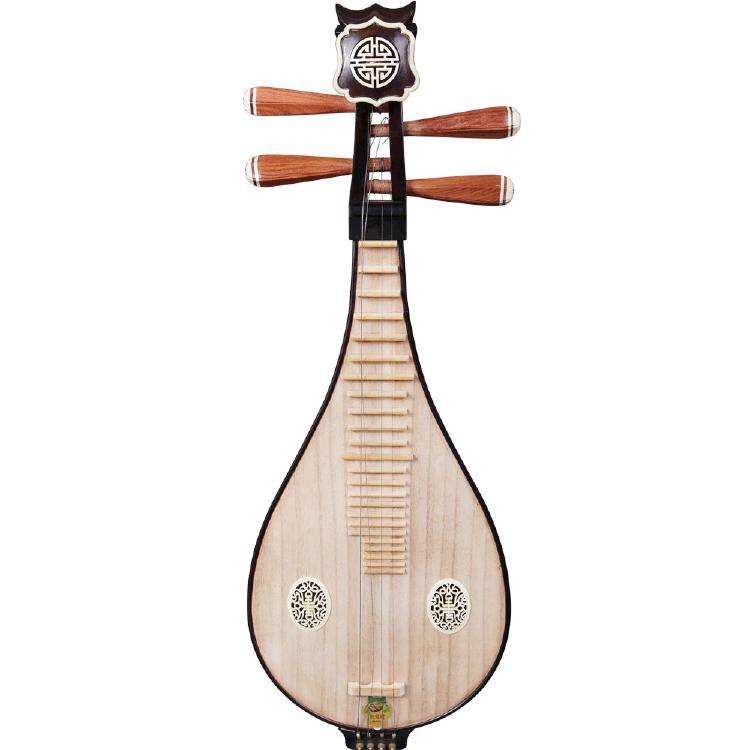Different forms of liuqin - three-stringed liuqin
In the development history of liuqin for more than 200 years, various forms of liuqin have appeared, such as the original two-string liuqin, three-string liuqin, four-string liuqin, five-string alto liuqin, seven-string liuqin, and double-resonance box liuqin. The music art of Liuqin has been expanded, and the development space of Liuqin has been expanded.

In the 1930s, the Shanghai Datong Concert made a more delicate liuqin, with three strings (two high-pitched strings of the same tone) and ten frets. hole. Unfortunately, this product has not survived.
In the 1950s, Mr. Wang Huiran of the Jinan Military Region Qianwei Song and Dance Troupe discovered this folk musical instrument when he went to experience life in the troops at the foot of Yimeng Mountain. Four-fret soprano liuqin.
The three-string twenty-four fret Liuqin uses high-quality mahogany as the back panel and high-quality sycamore wood as the top panel. The mahogany is hard and has a good reflection effect on the sound, and the sycamore wood is soft and vibrates well, making its sound quality and timbre more ideal. The sound beam and gallbladder are installed in the abdominal cavity of the liuqin. There are two circular sound holes on the panel, and sound windows made of bone or plastic are inlaid. The chromatic scale is arranged, the bamboo tube or horn tube used for performance is changed to a triangular pick (about 0.7-0.8 mm thick), and the silk strings are all made of steel strings or nylon strings, which increases the volume. Appropriate reforms have also been made in appearance, the original body of the piano has been reduced, and a careful design (similar to a small pipa) has been made, and the headstock has been exquisitely remodeled, equipped with exquisite and beautiful head flowers, neck flowers, and shafts. The head, sound window, etc., are also painted to make it look smooth and beautiful.
The sanxian liuqin is tuned according to the relationship of fourth and fifth degrees, usually set as d1, g1, d2 or d1, a1, d2, and the range is from d1 to d4, with three octaves. In this way, the sound range of the sanxian liuqin is slightly wider than that of the original liuqin, and the volume is slightly larger, and the problem of transposition is solved. In 1960, Mr. Wang Huiran composed my country's first liuqin solo "Silver Lake Jinbo" for the liuqin with three strings and 24th frets, ending the 200-year history of liuqin only being used for opera accompaniment.
 渝公网安备 50010702504639号
渝公网安备 50010702504639号